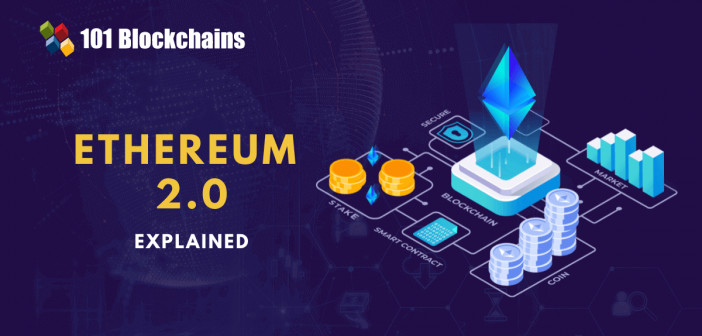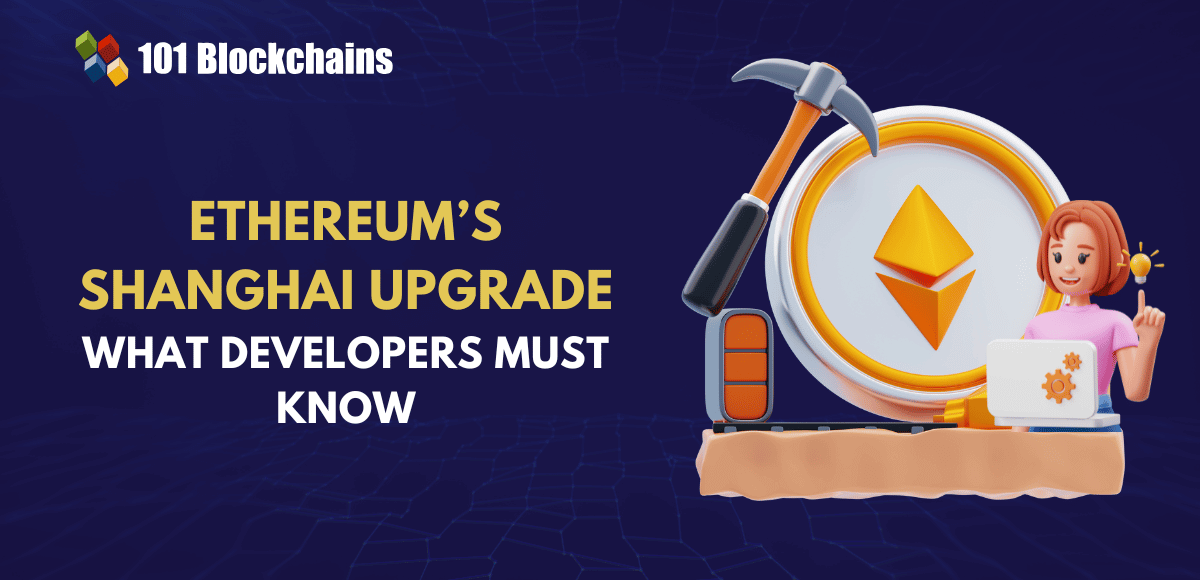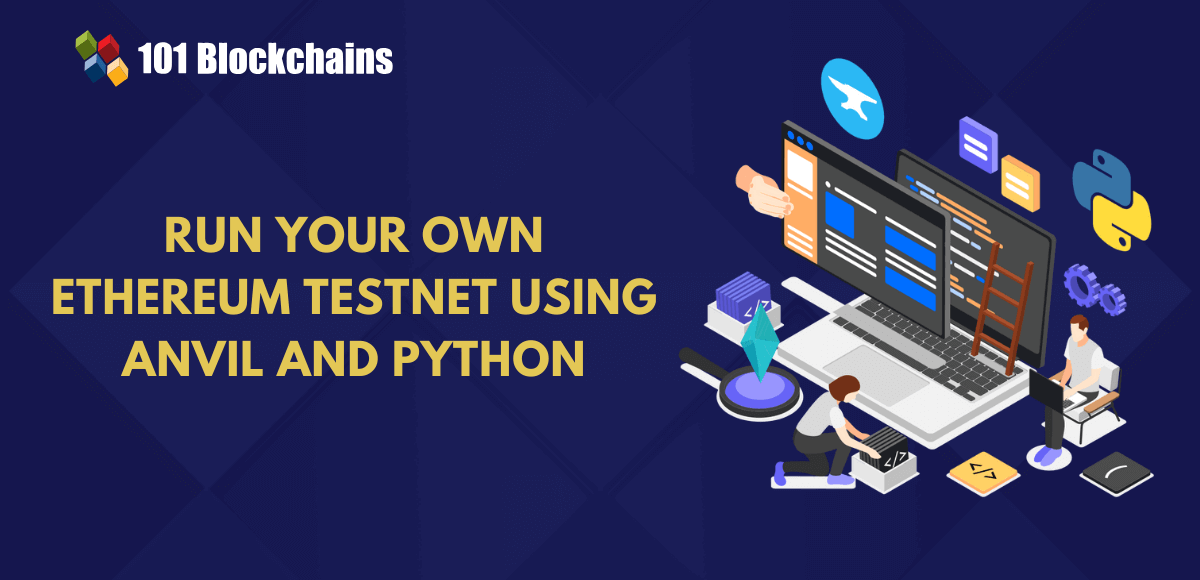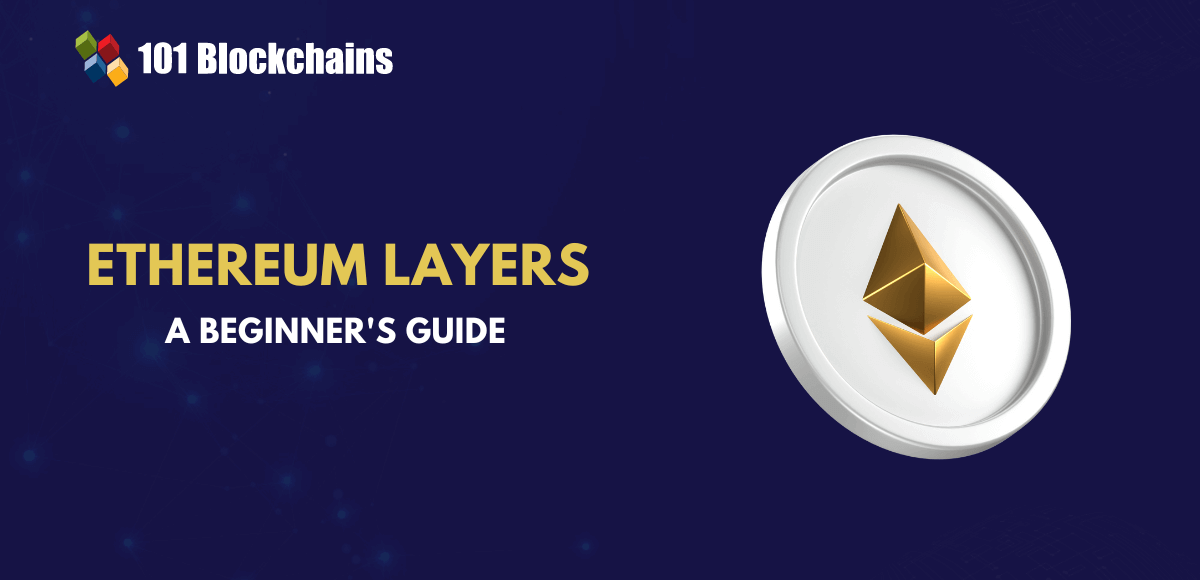Learn how blockchain truly works, master key definitions, and uncover what makes smart contracts so "smart." Dive into the fundamentals, gain valuable insights, and start your blockchain journey today!

- Ethereum
Georgia Weston
- on March 28, 2022
Ethereum 2.0 – A Comprehensive Guide
The success of Ethereum in 2015 opened the doors to many new players in the crypto space, which was practically all about Bitcoin till then. Vitalik Buterin and his team of developers crafted a breakthrough smart contract ecosystem for the blockchain industry. Today, Ethereum is a different universe altogether in the world of crypto. Almost every developer wants to create decentralized applications on the foundations of Ethereum. However, scalability continues to be the foremost trouble for Ethereum thereby calling for new solutions like Ethereum 2.0, which present improvements over the existing Ethereum blockchain.
Imagine a blockchain serving the needs of smart contracts as well as decentralized applications. At one point of time, the blockchain network will encounter a formidable roadblock for their future growth. The Ethereum Foundation worked on a few improvements in the existing blockchain network and introduced ETH 2.0.
So, what is Ethereum 2.0? How is it relevant for solving the problems of Ethereum blockchain today? What are the changes to the existing Ethereum blockchain with the arrival of ETH 2.0? Let us find the answers to all these questions in a detailed introduction to Ethereum 2.0 and an outline of its special traits.
Excited to build your skill in Ethereum development by leveraging the ethers.js library? Enroll Now in Ethers.Js Blockchain Developer Course!
Definition of Ethereum 2.0
The first aspect in any Ethereum 2.0 news or discussion focuses on its definition. ETH2 or ETH 2.0 is basically a set of upgrades intended for improving security, sustainability and scalability of Ethereum blockchain. The new upgrades basically aim to make the Ethereum network faster and more resource-effective. What are the improvements which separate ETH 2.0 from Ethereum 1.0?
Differences between Ethereum 1.0 and ETH 2.0?
The answers to “What is Ethereum 2.0?” do not reflect on the technical aspects of how it is better than Ethereum 1.0. ETH 2.0 has introduced two critical improvements which provide the assurance for desired benefits. The primary advancements include Proof of Stake consensus and sharding.
Here is an overview of the two key improvements you can find in ETH 2.0.
-
Proof of Stake Consensus
Ethereum 2.0 uses the Proof of Stake consensus rather than the Proof of Work consensus employed in Ethereum 1.0. Proof of Work consensus requires physical computing power from miners and electricity for developing blocks on the blockchain. On the contrary, Proof of Stake does not rely on miners and electricity. You will learn more about Proof of Stake later in the section on working of ETH 2.0.
-
Shard Chains
Another key improvement in ETH 2.0 refers to sharding. As a matter of fact, the shard chains are the integral factors driving scalability improvements for the Ethereum blockchain. The existing approach of building single chains with consecutive blocks offers better security and easy facilities for verifying information. On the other hand, passing each transaction to pass through every full node in consecutive blocks on a blockchain can reduce transaction speed. Shard chains serve a crucial highlight in Ethereum 2.0 news as they are largely responsible for scalability improvements.
Sharding is the mechanism for splitting the Ethereum blockchain to divide the responsibility of data processing equally among different nodes. The shard chains help in processing transactions in parallel to each other rather than processing them consecutively. With the support for improved parallel processing, Ethereum 2.0 can result in higher throughput.
Want to learn more about Ethereum Technology? Enroll now in The Complete Ethereum Technology Course
Roadmap for Ethereum 2.0
Considering the appealing value benefits of ETH 2.0, it is reasonable to wonder about its availability. Is Ethereum 2.0 coming out? Wasn’t it released in December 2020? Well, you are not the only one with such questions. If you look closely, ETH 2.0 is not a different blockchain network which is better than Ethereum 1.0. On the contrary, Ethereum 2.0 is a set of upgrades, which are being rolled out in different phases. Therefore, you need a clear overview of the roadmap for ETH 2.0 to understand its value. Let us take a look at the different phases on the roadmap for ETH 2.0 to find when it will be completely out.
-
Beacon Chain
The first phase garnered a lot of attention in Ethereum 2.0 news, particularly for the hype around ETH 2.0. In this phase, Ethereum implemented the new Beacon Chain or the Proof of Stake consensus layer. All validators represent a stake of 32 ETH on the Beacon Chain. As of now, the Beacon Chain has around 222,052 validators. Interestingly, the Proof of Work chain is also functional alongside the new PoS chain, without any compromises in data continuity.
-
Merging Beacon Chain with Mainnet
The next phase in the Ethereum 2.0 roadmap will involve the merger of the Beacon Chain with the Ethereum Mainnet. The merge actually provides a reliable answer for “Is Ethereum 2.0 coming out?” with plans for the same in early half of 2022. Following the merge, transactions and applications will continue as usual.
-
Shard Chains
The final stage in the evolution of Ethereum 2.0 would include the scalability phase. While the Beacon Chain and the Merge can improve sustainability and ensure continuity, shard chains will solve the scalability issue. As of now, the roadmap for ETH 2.0 suggests the possibilities for launching the scalability phase in late 2022. Shard chains will provide sustainable improvements in capacity for storing and accessing data. In addition, the scalability roadmap for ETH 2.0 also focuses on layer 2 solutions such as rollups.
Build your identity as a certified blockchain expert with 101 Blockchains’ Blockchain Certifications designed to provide enhanced career prospects.
Benefits of Ethereum 2.0
Another significant highlight in any introduction to Ethereum 2.0 refers to the advantages. What will Ethereum look like after completing the ETH 2.0 upgrades? The most prominent benefits of ETH 2.0 include improvements in throughput, security and scalability of the Ethereum mainnet. On the other hand, it also facilitates data continuity as ETH 2.0 would not eliminate transaction records, asset ownership or data history on Ethereum blockchain. Here are the notable value advantages of ETH 2.0.
- One of the most notable mentions in Ethereum 2.0 news refers to the improvements in energy-efficiency. With the help of Proof of Stake, the Ethereum blockchain can achieve 99.95% better energy efficiency while securing the network.
- The next prominent benefit of ETH 2.0 refers to the scope for better decentralization with more validators. Proof of Stake consensus plays a crucial role in reducing the technical barriers for individuals to stake in Ethereum 2.0 network.
- ETH 2.0 also provides the assurance of better security with high costs for compromising the network. In addition, Proof of Stake consensus enable easier identification of 51% attackers with their validator addresses. As a result, the network can fork away malicious actors in the case of an attack on the network.
Excited to know more about the fundamentals of Ethereum Development? Enroll now in Ethereum Development Fundamentals Course
Staking in Ethereum 2.0
The Proof of Stake consensus is a striking improvement over the existing Proof of Work consensus model. It is also an integral necessity for sharding which depends on validators alongside staked ETH for building blocks consecutively on the blockchain. Validators are the individuals who opt to continue the blockchain network with a stake of 32 ETH in the deposit contract. Validators are selected on a random basis from the pool of validators for creating the next block. When validators verify a block successfully, they receive reward in ETH. On the other hand, any validator attempting to compromise the block could incur penalties, such as losing their staked ETH deposit.
The rewards for staking on Ethereum 2.0 are calculated dynamically according to the state of network. At the completion of every epoch, validators would receive the ETH rewards for ensuring valid proposals and verifications. The rate of issuing rewards at the network level depend on the total amount of staked ETH deposits and the average uptime of validators. On the other hand, the rate of issuing rewards for individual validators depend on the number of validators used and the uptime of the validator.
Want to know the skills required to become an ethereum developer? Check the Presentation Now: How To Become An Ethereum Developer
How Can You Purchase ETH 2.0 Token?
If Ethereum 1.0 is changing to Ethereum 2.0, it is reasonable to expect an ETH 2.0 token. However, you could buy ETH 2.0 as you would not get a new variant of ETH token with the new ETH2 blockchain. As a matter of fact, you can identify two ways in which ETH holders could work on staking in ETH 2.0 for obtaining rewards. ETH holders can run their own validator nodes by staking ETH deposits in the multiples of 32 ETH on the network. On the other hand, ETH holders can also stake the rewards through a dedicated staking provider. ETH holders can also join a staking pool with smaller ETH amounts and receive rewards along the same lines as their stakes.
Final Overview
The final overview regarding Ethereum 2.0 shows that it is not a different blockchain than the existing Ethereum mainnet. As a matter of fact, ETH 2.0 is a collection of upgrades aimed at improving scalability, security and sustainability of Ethereum blockchain. The most important highlight in the design of ETH 2.0 is the Proof of Stake consensus. It serves as a plausible alternative to the energy-intensive Proof of Work consensus mechanisms. In addition, the lower barriers of entry for validators also increases the scope for decentralization in ETH 2.0.
On top of it, the Ethereum 2.0 Proof of Stake chain can present better prospects for identifying network attacks. With such promising improvements, ETH 2.0 also plans on including shard chains for ensuring better scalability. You can start learning more about ETH 2.0 and look out for the upcoming stages in its roadmap. Take a dive into the future of Ethereum right now.
Wondering how PoW and PoS are different from each other? Check Now: PoW vs Pos Comparison
Ethereum 2.0 FAQ
-
What is Ethereum 2.0?
Ethereum 2.0 is a collection of upgrades which can improve scalability, security, speed and sustainability of the Ethereum blockchain. Ethereum has emerged as a top choice for developing decentralized applications and smart contracts. At the same time, it also takes on a huge load of transactions, which takes time for verification while consuming resources on a massive scale. With upgrades such as Proof of Stake consensus model and shard chains, the ETH 2.0 ensures improved scalability for accommodating the growing volume of transactions.
-
How is Proof of Stake consensus helping Ethereum 2.0?
Proof of Stake consensus mechanism is one of the foremost highlights in Ethereum 2.0 news, as it introduces major improvements. The new consensus mechanism ensures energy-efficient transactions while also improving the speed of transactions. In addition, Proof of Stake consensus also helps in identifying attackers easily through validator addresses.
-
What is the process for staking in Ethereum 2.0?
You can become a validator in Ethereum 2.0 blockchain with a stake of 32 ETH in the deposit contractor. All validators in a pool are selected randomly for different transactions. The validators have to verify each transaction and create a block. Validators receive rewards in ETH for creating a block successfully.
-
What are the risks of staking in Ethereum 2.0?
While staking in ETH 2.0 as a validator helps you earn rewards in ETH, you should also take note of some risks of losing funds. For example, validators can lose their funds without performing their duties timely. Furthermore, validators can also lose money if they publish controversial information regarding the blockchain. However, you can stay safe from the risks with the appropriate precautions.
*Disclaimer: The article should not be taken as, and is not intended to provide any investment advice. Claims made in this article do not constitute investment advice and should not be taken as such. 101 Blockchains shall not be responsible for any loss sustained by any person who relies on this article. Do your own research!





